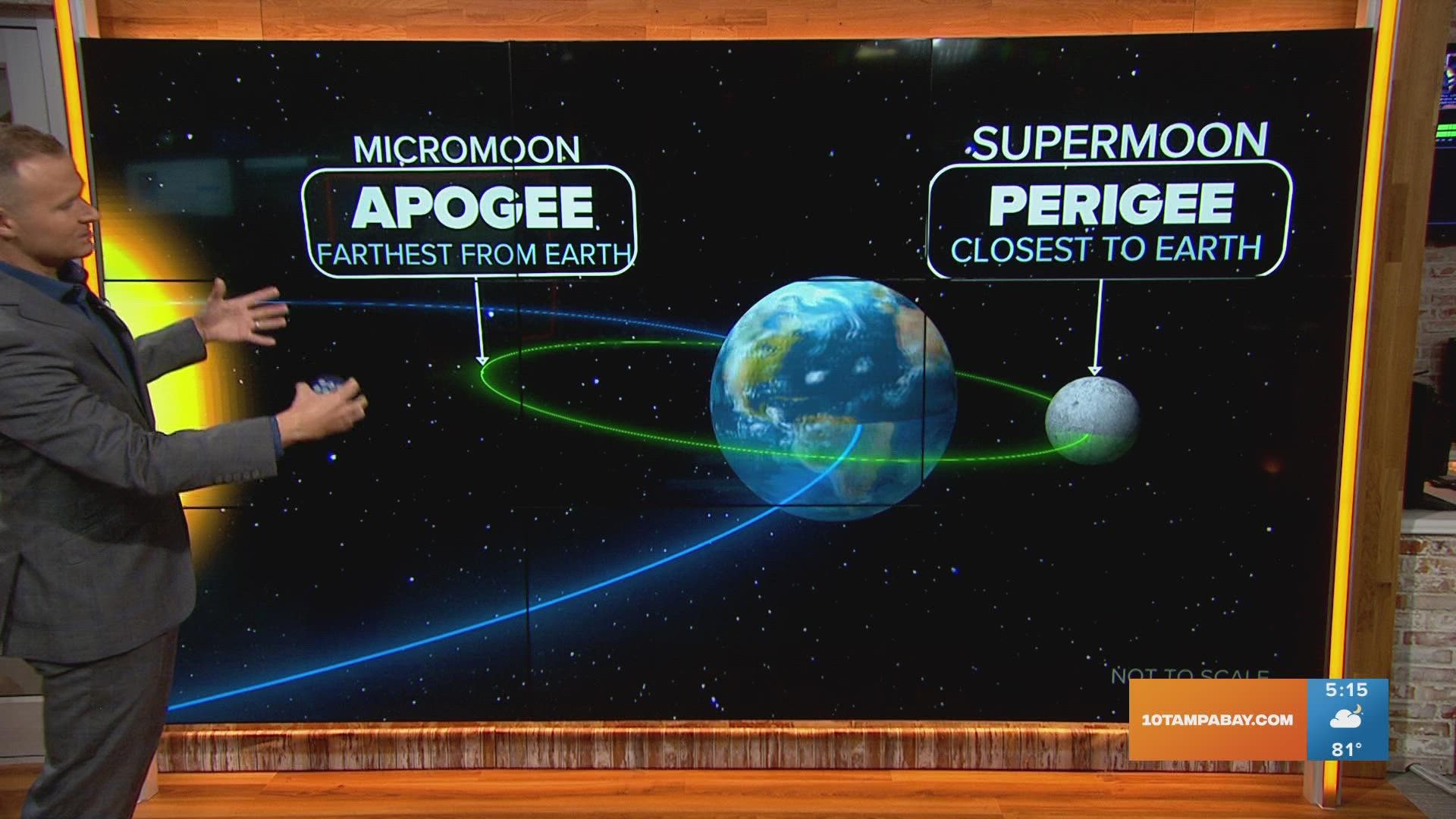TAMPA, Fla. — The next full moon that fills the night sky will actually be a supermoon – something you'll only see a total of four times in 2023.
At 7:39 a.m. on Monday, July 3, there will be a full moon appearing opposite the Sun in Earth-based longitude, leaders from NASA explain online.
The moon will reportedly look full for three whole days around this time – from Saturday evening until Tuesday evening.
According to NASA, many publications consider this Monday event as the first of four consecutive supermoons in 2023. There will reportedly be two more full moons in August and another in September.
Supermoons happen when the full moon happens at the same time as the moon's closest approach to Earth, WUSA explains. According to NASA, supermoons can appear up to 17 percent bigger and 30 percent brighter than the furthest and faintest moon of the year.
"The term 'supermoon' was coined in 1979 and is often used to describe what astronomers would call a perigean full moon: a full moon occurring near or at the time when the Moon is at the closest point in its orbit around Earth," NASA leaders explain online.
The term gives preference to the geometric alignment of Sun-Earth-Moon and allows the occurrence of perigee into a wider time period than the actual instant of perigee
After Monday, the next full moon will be at 2:32 p.m. on Tuesday, Aug. 1. The moon will appear full for three days around this time, from early Monday morning until early Thursday morning.
To read more about the upcoming supermoons, click here.

